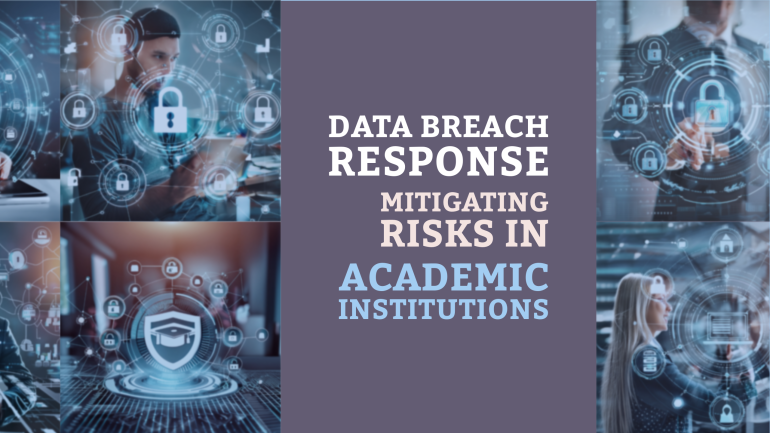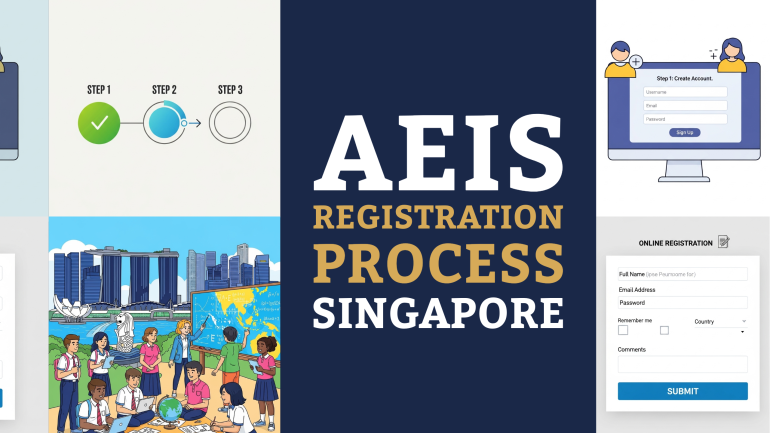Table of Contents
TL;DR: Data Breach Response – Mitigating Risks in Academic Institutions
- Establish a Response Plan: Academic institutions should have a comprehensive data breach response plan in place that outlines the necessary steps to take in the event of a breach.
- Training and Awareness: Regularly train staff and students on cybersecurity best practices to reduce human error and increase awareness of potential threats.
- Encryption and Access Controls: Implement encryption methods and access controls to safeguard sensitive data and limit unauthorized access to information.
- Incident Response Team: Form an incident response team comprised of members from IT, legal, communications, and other relevant departments to efficiently address and contain breaches.
- Communication Strategies: Develop effective communication strategies to notify affected individuals, stakeholders, and the public about the breach while maintaining transparency and credibility.
Response strategies to data breaches are critical for academic institutions in safeguarding sensitive information and maintaining trust among students, faculty, and stakeholders. With the increasing frequency and sophistication of cyberattacks, it is paramount for universities and colleges to have robust security measures in place to prevent, detect, and respond to breaches promptly. This blog post will explore into the importance of data breach response plans tailored to the unique challenges faced by academic institutions, highlighting key steps to mitigate risks and protect valuable data assets.
Risk Assessment in Academic Environments
Identifying Vulnerable Data Assets
Little attention is often given to the critical first step in data breach response – identifying vulnerable data assets in academic institutions. These assets are often scattered across various departments and systems, making it crucial to map out where sensitive information is stored.
Evaluating Current Security Measures
On the flip side, evaluating current security measures is imperative to understand the level of protection in place for these valuable data assets. This assessment involves looking at the existing firewalls, encryption methods, access controls, and incident response protocols.
Plus
, it’s imperative to pay special attention to any weak points or gaps in the security infrastructure that could make the institution more vulnerable to data breaches. Addressing these weaknesses promptly is crucial to ensuring the overall security of the academic environment.
Developing a Data Breach Response Plan
Formulating an Incident Response Team
On developing a data breach response plan for academic institutions, it is crucial to formulate an incident response team. This team should comprise individuals from various departments such as IT, legal, public relations, and administration to ensure a comprehensive and coordinated response to any security incident.
Crafting Notification Protocols
Plan the crafting of notification protocols meticulously. In the event of a data breach, academic institutions must promptly notify affected individuals, regulatory bodies, and other stakeholders. The notification protocols should outline the specific steps to be taken, including the timeline for notifications, communication channels, and the content of the messages.
Response: Crafting effective notification protocols is important to mitigate the risks associated with a data breach. Failure to notify stakeholders in a timely and transparent manner can lead to further reputational damage, legal consequences, and financial implications for the academic institution. By having clear protocols in place, institutions can demonstrate their commitment to data protection and compliance with regulations.
Implementing Post-Breach Strategies
Mitigation Techniques for Containing Data Leaks
Techniques to contain data leaks in academic institutions involve swift action and careful planning. To mitigate the risks post-breach, it is crucial to isolate the affected systems, conduct a thorough investigation to identify the extent of the breach, and implement temporary patches to prevent further data exfiltration. Additionally, communicating transparently with stakeholders, including students, faculty, and regulatory bodies, is crucial in maintaining trust and managing the aftermath of a breach.
Long-Term Preventative Measures and Policies
One of the keys to safeguarding academic institutions from future data breaches is the implementation of long-term preventative measures and policies. This includes regularly updating security protocols, conducting routine vulnerability assessments, and training staff and students on best practices for data security. Developing a robust incident response plan that outlines clear roles and responsibilities for handling breaches can also help in minimizing risks and ensuring a swift response in the event of a data breach.
Data breaches in academic institutions can have severe repercussions, including financial losses, reputational damage, and legal implications. By implementing effective post-breach strategies and prioritizing long-term preventative measures and policies, institutions can strengthen their security posture and protect sensitive data from cyber threats.
Legal and Regulatory Considerations
Compliance with Educational Data Protection Regulations
Considerations for academic institutions regarding data breach response must align with educational data protection regulations to avoid severe penalties. It is crucial to comply with laws such as the Family Educational Rights and Privacy Act (FERPA) and the General Data Protection Regulation (GDPR) to safeguard students’ sensitive information. Non-compliance can result in significant financial repercussions and tarnish the institution’s reputation.
Handling Legal Repercussions after a Data Breach
Educational institutions must be prepared to handle legal repercussions post a data breach. Immediate steps should include notifying affected individuals, regulatory bodies, and implementing measures to mitigate further damage. Seeking legal counsel is imperative to navigate potential lawsuits and investigations. Failure to address legal obligations promptly can lead to lawsuits, fines, and long-term legal consequences.
Training and Awareness Programs
Educating Faculty and Staff
Despite the growing number of data breaches in academic institutions, many faculty and staff are still unaware of the risks and best practices for cybersecurity. It is crucial to provide comprehensive training programs to educate them on identifying threats, handling sensitive information, and following security protocols.
Engaging Students in Cybersecurity Practices
For academic institutions, engaging students in cybersecurity practices is important to create a culture of security awareness. Students are often targets of cyber attacks due to their lack of experience and awareness of online threats. Programs should focus on teaching them about phishing scams, password best practices, and the importance of keeping software updated.
Engaging students in hands-on activities such as simulated phishing exercises and cybersecurity workshops can help them understand the real-world implications of cyber threats. By involving students in training programs and promoting a proactive approach to cybersecurity, academic institutions can better protect their sensitive data and networks.
Final Words
As a reminder, data breach response is a critical aspect of maintaining cybersecurity in academic institutions. By implementing proactive measures such as regular security audits, staff training, and incident response plans, institutions can mitigate the risks associated with data breaches. It is crucial for academic institutions to prioritize data protection to safeguard sensitive information and uphold their reputation. Stay vigilant, stay prepared, and prioritize cybersecurity to protect the integrity of your institution’s data.
FAQ
Q: What is a data breach in the context of academic institutions?
A: A data breach in academic institutions refers to the unauthorized access, disclosure, or loss of sensitive information such as student records, research data, or intellectual property.
Q: How do data breaches occur in academic institutions?
A: Data breaches in academic institutions can occur through various means such as cyberattacks, phishing emails, malware infections, human error, or insider threats.
Q: What are the risks associated with data breaches in academic institutions?
A: The risks associated with data breaches in academic institutions include reputational damage, financial losses, legal consequences, loss of trust from students and stakeholders, and potential identity theft or fraud.
Q: How can academic institutions mitigate the risks of data breaches?
A: Academic institutions can mitigate the risks of data breaches by implementing strong cybersecurity measures, conducting regular security assessments, providing training to staff and students on data security best practices, and having a response plan in place.
Q: What should academic institutions do in response to a data breach?
A: In response to a data breach, academic institutions should immediately contain the breach, assess the impact, notify affected individuals, cooperate with law enforcement if necessary, conduct a thorough investigation, and implement measures to prevent future breaches.





